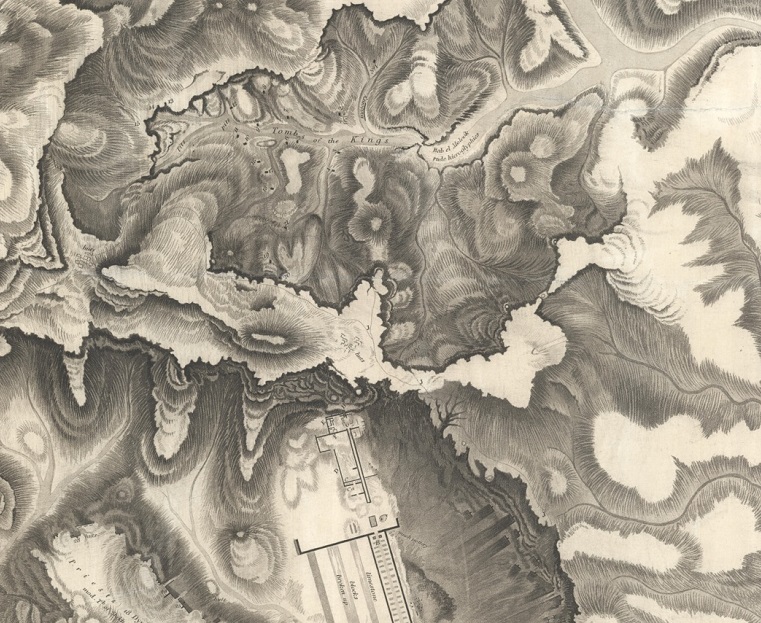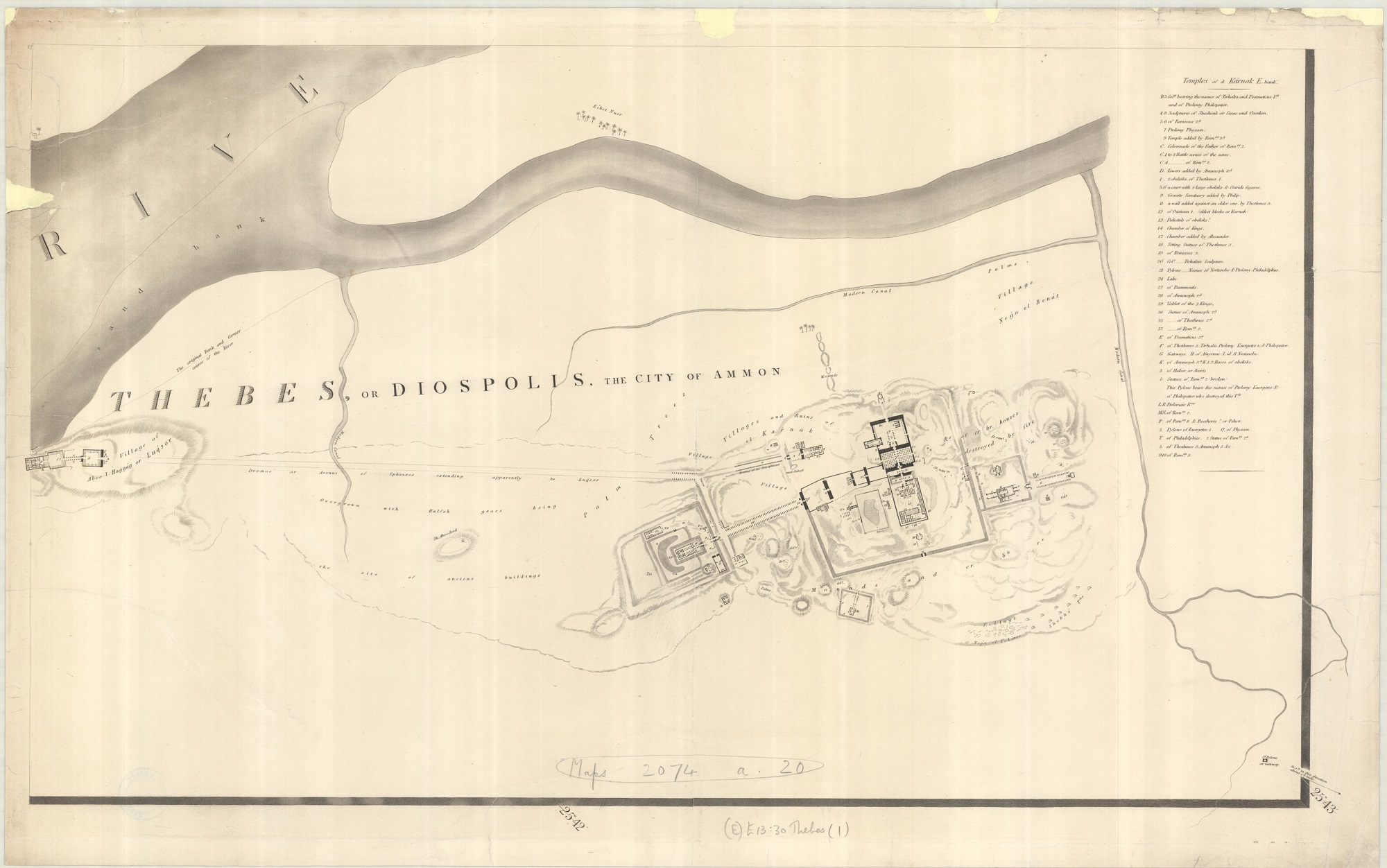A short blog to mark 100 years to the day that Howard Carter, a team of archaeologists and local workers cleared the last of the rubble from steps in the Valley of the Kings and found an undamaged door at the bottom. After removing this outer door the door to the tomb of Tutankhamun was revealed. Two days later, November the 26th, 1922, Carter, along with Lord Carnarvon, made a small hole in this door which Carter then peered through. Asked if he could see anything by his patron Carter uttered the most famous words in archaeological history, ‘Yes, wonderful things…’
Nearly 100 years earlier the west bank of the Nile was mapped by the one of the first Egyptologists John Gardner Wilkinson. Wilkinson produced a detailed map on 6 sheets, with the relief beautifully and realistically engraved. Here’s the sheet covering the Valley of the Kings area.
Topographical Survey of Thebes…by J. G. Wilkinson, 1830. (E) E13:30 Thebes (1)
This is an extract from the map showing the Valley above the Temple of Deir el-Bahari.
With its use of shading and hachures (the short engraved lines showing direction of slope) you get a real sense of the hills and valleys. Following his death in 1875 Wilkinson’s extensive papers came to the Bodleian, an invaluable resource for the study of Egyptian antiquities before the onset of tourism and removal of objects changed their appearance for ever (The page of hieroglyphs at the sides of this blog come from one of Wilkinson’s note-books, MS. Wilkinson dep d.47). Here’s a beautifully hand-drawn sketch of the Valley of the Kings from Wilkinson’s papers.
‘Valley of Biban el Molook, or of the Tombs of the Kings of Thebes’. Original manuscript by John Gardner Wilkinson, c1830? MS Wilkinson dep. a.22 (fol. 70).
In this map Wilkinson identifies each tomb with letter; by the time he had drawn and published the ‘Topographical Survey…’ these letters had been replaced by the numbers that are still in use today, as can be seen in this extract from the map. Tutankhamun’s tomb would be found by Carter close to tomb 9, the shared tomb of Rameses V and VI.
Karte der Westlichen und Umgebung von Luķsor und Karnak [Theben] 1909. E13:22 (1)
 This 1909 German map of Luxor and the surrounding area shows how different the relief is on the west bank of the Nile compared to the east. It’s a land of contrasts, of flat fertile land close to the river and desert and mountain further out, of a land of life and of death. The hilly area centring on the Valley of the Kings (Königsgräber on the map, and extract at right) is rich in tombs of royals, nobles and workers. It’s also a map full of the wonders of ancient Egypt. On the east bank the temple at Karnak, the greatest of all surviving Egyptian temple complexes and on the west bank famous archaeological sites, including the temples of the Ramesseum, Medinet Habu and Deir el-Bahari as well as the Valley of the Kings and Queens.
This 1909 German map of Luxor and the surrounding area shows how different the relief is on the west bank of the Nile compared to the east. It’s a land of contrasts, of flat fertile land close to the river and desert and mountain further out, of a land of life and of death. The hilly area centring on the Valley of the Kings (Königsgräber on the map, and extract at right) is rich in tombs of royals, nobles and workers. It’s also a map full of the wonders of ancient Egypt. On the east bank the temple at Karnak, the greatest of all surviving Egyptian temple complexes and on the west bank famous archaeological sites, including the temples of the Ramesseum, Medinet Habu and Deir el-Bahari as well as the Valley of the Kings and Queens.
Here’s another of the sheets from Wilkinson’s map of Thebes with the Luxor and Karnak temples.
The library holds a set of maps showing the area around the tombs, ‘The Theban Necropolis’, published by the Survey of Egypt in in 1924. Frustratingly it doesn’t include the sheet covering the Royal Tombs though one sheet, C-7, does include Howard Carter’s house.
The Theban Necropolis, 1924. E13:30 Thebes (3) sheet C-7
Want to know more about the discovery of Tutankhamun’s tomb? There’s a marvellous exhibition on at the Bodleian until February next year, details here Tutankhamun: Excavating the Archive | Visit the Bodleian Libraries (ox.ac.uk)


















